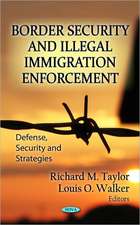Cybersecurity and Homeland Security
Editat de Lin V. Choien Limba Engleză Paperback – 31 dec 2005
Preț: 396.05 lei
Preț vechi: 535.48 lei
-26% Nou
Puncte Express: 594
Preț estimativ în valută:
75.79€ • 79.49$ • 63.09£
75.79€ • 79.49$ • 63.09£
Carte disponibilă
Livrare economică 11-25 martie
Preluare comenzi: 021 569.72.76
Specificații
ISBN-13: 9781594547287
ISBN-10: 1594547289
Pagini: 138
Dimensiuni: 139 x 213 x 11 mm
Greutate: 0.23 kg
Editura: Nova Science Publishers Inc
ISBN-10: 1594547289
Pagini: 138
Dimensiuni: 139 x 213 x 11 mm
Greutate: 0.23 kg
Editura: Nova Science Publishers Inc
Cuprins
Preface; Creating a National Framework for Cybersecurity: An Analysis of Issues and Options; Cybersecurity for the Homeland: Report of the Activities and Findings by the Chairman and Ranking Member Subcommittee on Cybersecurity, Science, and Research and Development of the U.S. House of Representatives Select Committee on Homeland Security; Index.









